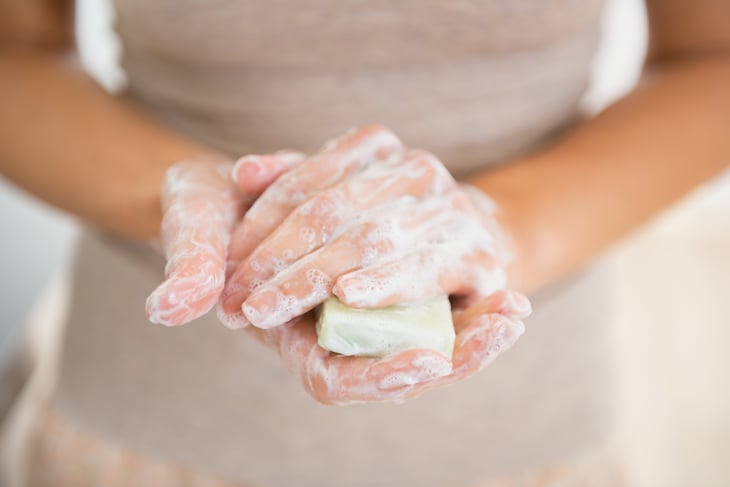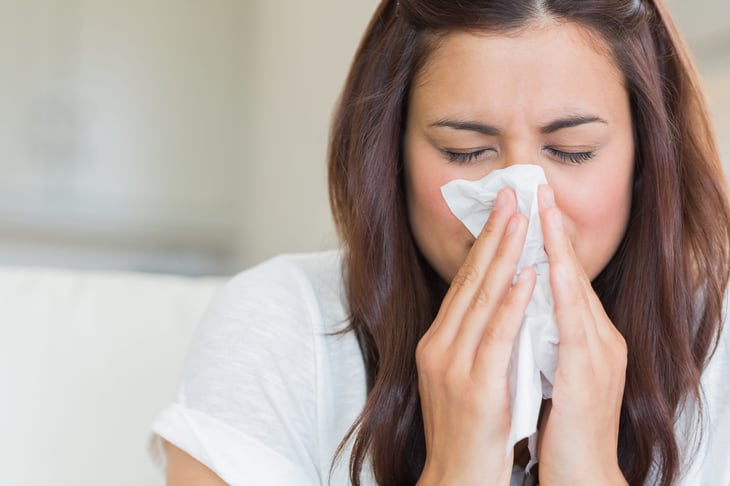
Flu season is in full swing, with influenza activity considered “higher” or “very high” in almost every state, according to the latest data from the U.S. Centers for Disease Control and Prevention.
The CDC estimates that there have been 15 million to 33 million cases of influenza infections since Oct. 1, 2022. And it’s not over. In fact, flu season usually peaks around February — and can last as late as May.
Influenza can keep you in bed for days or even weeks. It also can be fatal, as already has been the case for an estimated 9,000 to 28,000 people in the past two months.
Fortunately, there are ways to protect yourself. Following are some very simple, cost-effective things that will substantially reduce your risk of catching the flu.
1. Get a flu shot

While the Centers for Disease Control and Prevention advises everyone to get an influenza vaccine by the end of October, it’s not too late to get vaccinated.
That’s because the worst of the flu season is probably yet to come. Again, flu activity typically doesn’t peak until February and significant activity can continue as late as May.
Thanks to the Affordable Care Act of 2010, you will not have to pay for a flu shot if you have insurance. According to the U.S. Department of Health and Human Services, insurers are required to cover flu and other vaccines and to not charge a copayment or coinsurance.
However, HHS notes that you must check with your insurance company before you get a shot. Some insurance plans require you to go to a specific facility to get a cost-free vaccination.
If you have Medicare, your flu shot also is free. Visit the “Flu shots” page of the government’s official Medicare website to search for one near you.
2. Wash your hands regularly

Hopefully, everyone already knows this tip all too well thanks to the coronavirus pandemic. As with that virus, using a little soap and water hardly costs anything, and yet it provides a tremendous payoff by killing the germs that cause the flu.
The CDC says properly washing your hands involves five steps:
- Wet hands with clean, running water and apply soap.
- Lather hands — including the back of the hands, between fingers and under nails — by rubbing them together with the soap.
- Scrub hands for a minimum of 20 seconds — about the length of time it takes you to hum the “Happy Birthday” song twice.
- Rinse hands under clean, running water.
- Dry hands with a clean towel, or allow them to air dry.
If soap and water are not available, use a hand sanitizer that contains at least 60% alcohol, the CDC says.
3. Avoid touching your face

Keeping your hands away from your face is an extremely simple — but effective — way of staying healthy.
The CDC notes that one way people might catch the flu is by people touching a surface that is contaminated with the flu virus and then touching their eyes, nose or mouth.
So, keep your hands away from your face this winter. It won’t cost you a penny to do so.
4. Avoid people who are sick

Another way you might catch the flu involves proximity to people who have the virus. The CDC explains:
“Most experts think that flu viruses spread mainly by droplets made when people with flu cough, sneeze, or talk. These droplets can land in the mouths or noses of people who are nearby (usually within about 6 feet away) or possibly be inhaled into the lungs.”
Avoiding people who know they have the flu is hardly foolproof because someone could be infected and just not know it yet. The virus can be detected in most people one day before their symptoms and up to five to seven days after they get sick, according to the CDC. Still, this tip can’t hurt, and it’s another free preventive measure.
5. Get enough (good) sleep

Studies have shown that people who have poor quality sleep or who get insufficient sleep are more likely to get sick if they are exposed to a virus.
Your immune system can’t fight off infections as well without enough sleep. As the nonprofit Mayo Clinic explains the science:
“During sleep, your immune system releases proteins called cytokines, some of which help promote sleep. Certain cytokines need to increase when you have an infection or inflammation, or when you’re under stress. Sleep deprivation may decrease production of these protective cytokines. In addition, infection-fighting antibodies and cells are reduced during periods when you don’t get enough sleep.”
So how much is enough sleep to help you avoid catching a virus like the flu?
One study out of the University of California San Francisco in 2015 — which was the first to use objective sleep measures to connect participants’ sleep habits and risk of getting sick — found that getting more than seven hours of sleep gives you the best odds of not catching a cold.
The study participants who got the least sleep — less than five hours per night — were 4.5 times more likely to catch a cold compared to the participants who got more than seven hours.
Of course, getting good sleep isn’t a guaranteed method for avoiding the flu or any other infection, but it is another flu-fighting tool that is cost-free.
6. Exercise regularly

It seems there is no end to the health benefits associated with exercise. Fighting off the flu is one more perk to add to the list.
According to a 2014 study of some 4,800 people by the London School of Hygiene & Tropical Medicine, doing at least 2.5 hours of vigorous exercise per week reduces your risk of catching the flu or a similar illness by around 10%.
More recently, studies have even found that having a consistent exercise routine offers strong protection against the virus that causes COVID-19.
And exercise doesn’t have to cost you a dime, either.




Add a Comment
Our Policy: We welcome relevant and respectful comments in order to foster healthy and informative discussions. All other comments may be removed. Comments with links are automatically held for moderation.